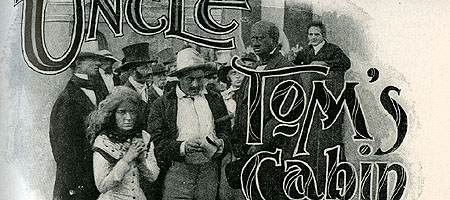
CLICK TO ENLARGE

| According to a notice in The Moving Picture World (see
below), this two-reeler opened or
went on sale to distributors on 17 December 1913. It is now lost, but featured
Anna Nilsson as Eliza and Hal Clemmons as Legree, and may have been directed by
Sidney Olcott, who made over 100 silent films beginning with the earliest
adaptation of Ben-Hur in 1907. In the notice below the reviewer
singles out for special praise Clemmons' work as the villain and Kalem's
handling of "Southern stories," including this Uncle Tom's Cabin. It may be that our best access to the movie is the Motion Picture Story Magazine, which ran a "Photoplay Story" on the film in its January 1914 issue. For illustrations they used still photographs from the film, so you can get some sense of how this production looked from the images below: |
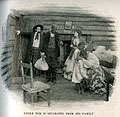 |
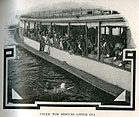 |
 |
 |
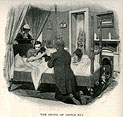 |
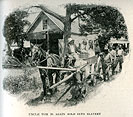 |
At the same time, since the magazine boasted that its "photoplay stories" were written from a film's shooting script and so provided their readership with an accurate transcription of the film, the 10-page story that writer Karl Schiller made out of the 30-minute movie that Kalem made out of the novel that Stowe wrote is presumably faithful to what contemporary movie-goers saw. We might wish that Schiller's prose was more descriptive and less melodramatic. And we probably have to discount Schiller's emphasis on how characters sounded -- unless the film's titles made the same point, those movie-goers couldn't have "heard" Marie St. Clare speak in a dialect "southern" enough to make her sound like one of the blacker characters in the text Stowe wrote. But it's very interesting to read Schiller's description of a scene of blacks singing and dancing on the steamboat that carries Tom away from Kentucky (page 70 in the "photoplay" below) and wonder how typical is his racialized way of seeing that familiar scene. In any case, this article will have to serve as the closest we've gotten so far to a script for this version of Uncle Tom. |
|
|
